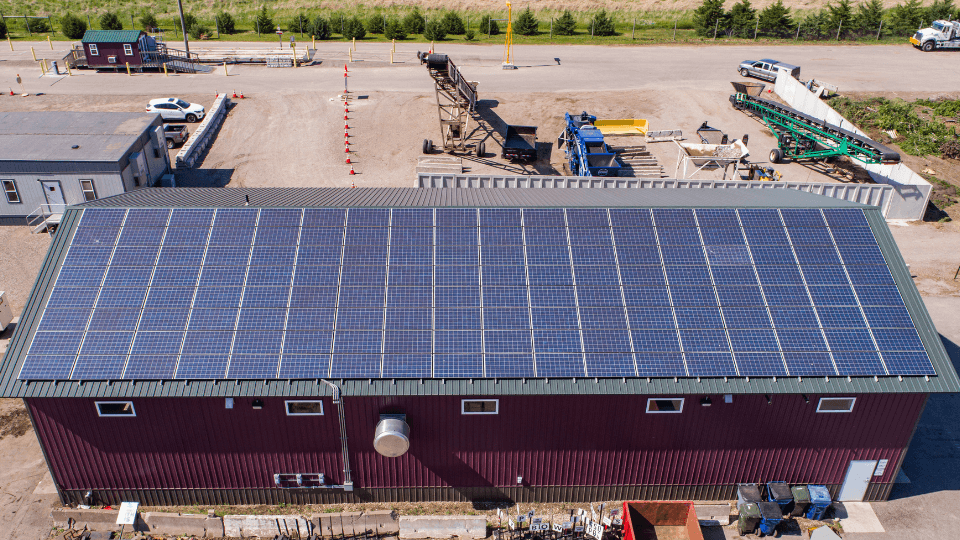
In our ongoing commitment to sustainability, we’ve harnessed the power of the sun to help operate our composting facility. Solar panels, once seen as a futuristic solution, have now become an essential tool in our mission to reduce our carbon footprint and embrace clean, renewable energy. Let’s look at the fascinating journey of how solar panels work and how we’ve implemented them to power our composting facility.
The Science of Solar Panels
To truly appreciate how solar panels work, it’s important to understand the basic science behind them. Solar panels are comprised of numerous photovoltaic (PV) cells, typically made of silicon. When sunlight strikes these cells, it initiates a process that generates electricity. This phenomenon is known as the photovoltaic effect.
Here’s how it works:
- Absorption of Sunlight: Solar panels are designed to absorb sunlight, specifically the photons within the sunlight.
- Excitation of Electrons: When photons hit the PV cells, they transfer their energy to electrons in the cells, exciting them and causing them to move.
- Electric Current Generation: As the excited electrons move, they create an electric current, which is then collected and channeled for use.
The electricity generated by solar panels is direct current (DC), but most of the devices we use require alternating current (AC). This is where inverters come into play, converting DC into AC, making it compatible with our facility’s electrical systems.
Powering Our Composting Facility
Now, let’s delve into how we’ve harnessed this incredible power source to run our composting facility:
- Solar Panel Installation: The first step was to install a solar panel array on our facility’s rooftop, which was done during the initial build. The facility and its solar power have been operational since 2011. The positioning and angle of the panels were carefully chosen to maximize sunlight absorption throughout the day. The new facility currently under construction will also use the power of solar.
- Connection to the Building: The AC electricity produced by the solar panels is connected to the building’s electrical system through a device known as a solar inverter. This inverter ensures that the electricity generated by the panels can be used to power the building’s needs.
- Power Distribution: The solar-generated electricity can now be distributed within the building and used to partially power various electrical loads. The building will use solar electricity first before drawing power from the grid, which can help reduce the facility’s reliance on conventional energy sources.
- Monitor and Maintenance: Regular monitoring and maintenance are key to ensuring the efficiency of our solar panel system. We track energy production, check for any issues, and perform necessary maintenance to keep the system running smoothly.
Environmental and Economic Benefits
Our choice to use solar power has had a profound impact, both environmentally and economically:
- Reduced Carbon Footprint: By relying on solar panels to power our composting facility, we’ve significantly reduced our reliance on fossil fuels and, in turn, decreased our carbon emissions.
- Cost Savings: While the initial investment in solar panels can be substantial, the long-term cost savings are substantial. With reduced energy bills, our investment is steadily paying off.
- Sustainability Leadership: Embracing solar energy has allowed us to take a leadership role in sustainable practices within the composting industry. We hope to inspire others to follow suit and contribute to a greener planet.
Our journey in reducing our energy consumption with solar panels has been transformative. We’ve harnessed the incredible power of the sun, reducing our environmental impact and demonstrating our commitment to a sustainable future. As we continue to fine-tune and expand our solar panel system in the new facility and beyond, we’re excited to share our progress and inspire others to join the renewable energy revolution. Together, we can all contribute to a cleaner, more sustainable world.
Resources: energy.gov; solar.com





